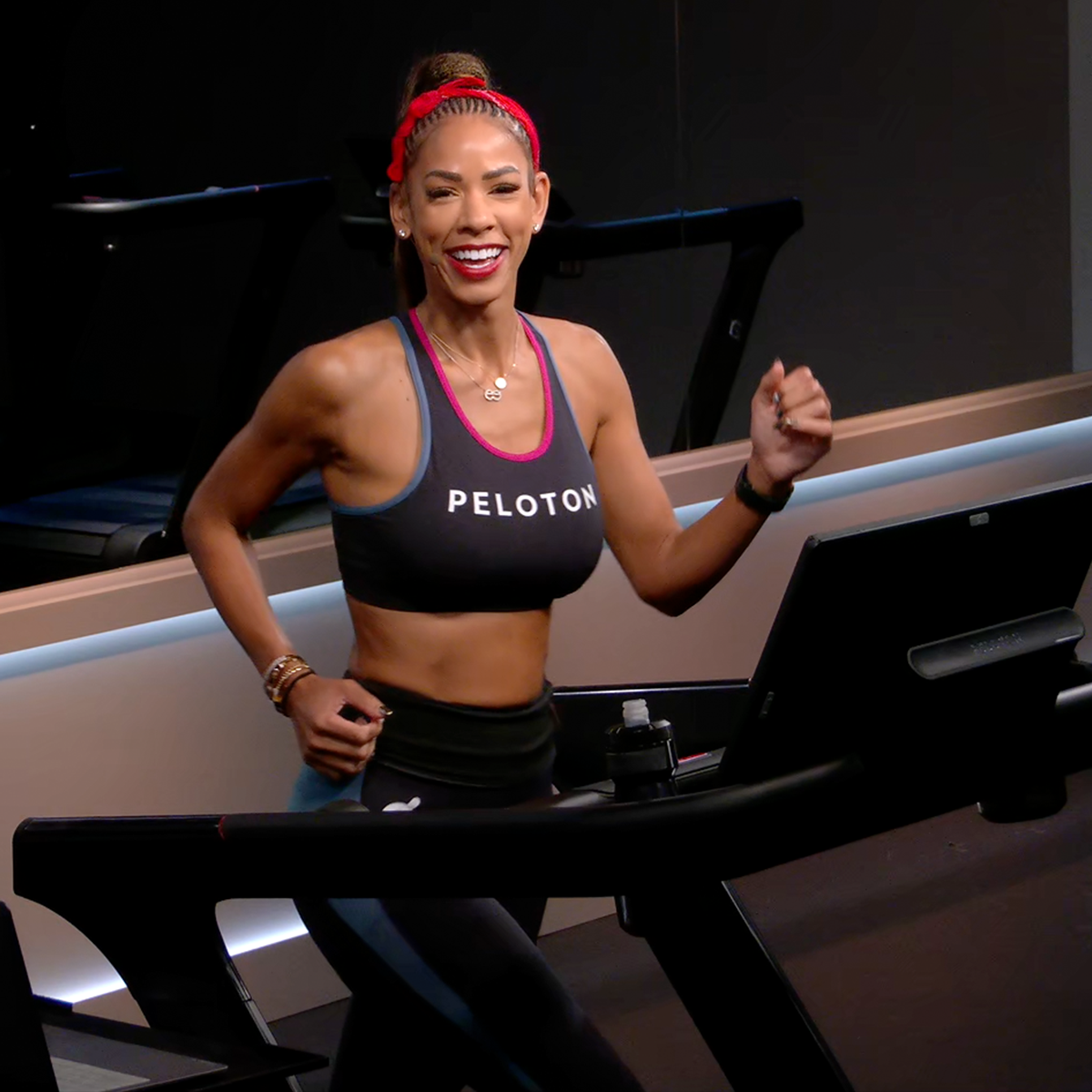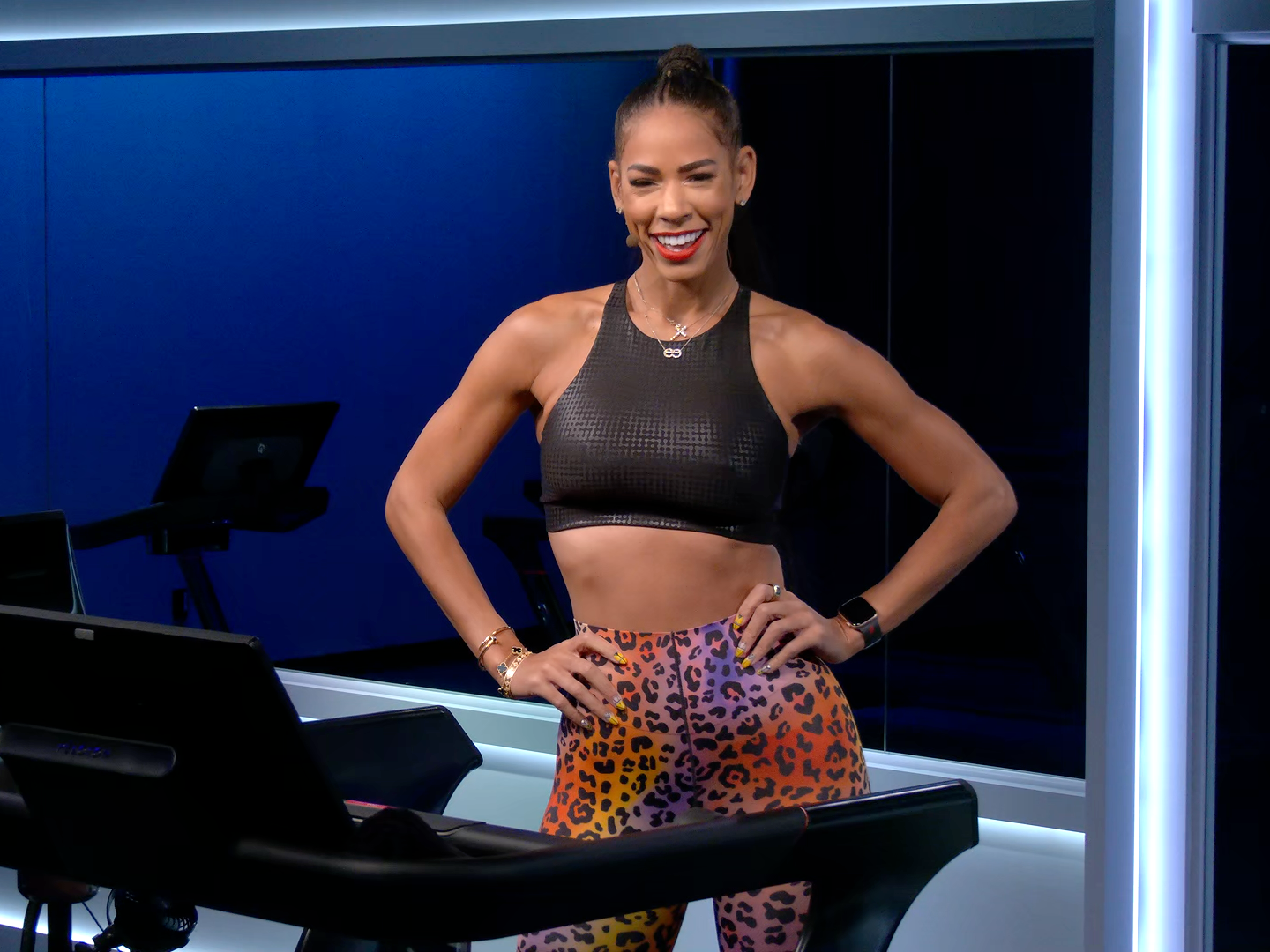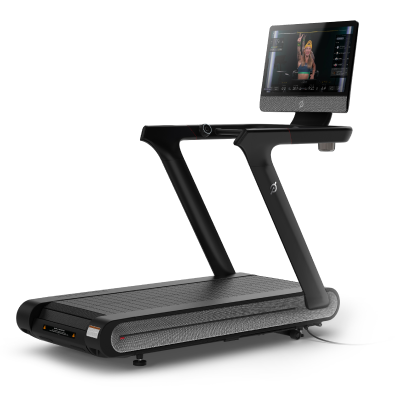
Is Hiking a Good Workout? Here’s How To Get Fit With Hiking
Peloton hiking classes, on the Tread and App, are perfect for both hard workouts and recovery days.
By Amy Gurvitz , Team Peloton•
Is Hiking a Good Workout?
What Are the Benefits of Hiking?
What Are Hiking Workouts?
How To Adjust Your Hike
Gear You Need for Hiking
How Can Hiking Fit Into Your Routine?
Perfect for all paces, hiking is not only a solid workout, but offers a great boost for your mental health too. And, the good news is, if you can’t get outside, prefer to train indoors, or need to log some extra miles in your training, the trails can come to you. How so? Specific programming can make for incredible hiking workouts on treadmills, whether you’re at home on a Peloton Tread or in your gym.
We’ll walk you through everything you need to know about the benefits of hiking workouts.
Is Hiking a Good Workout?
Just like walking workouts or dancing, hiking is actually a form of cardio as it gets your heart pumping and challenges your body over a period of time. From a gentle walk to a rigorous hike, the pace in which you hike plus the incline and terrain will help determine how much of a workout you’re getting. And, while the harder the hike, the stronger the workout, even a moderate hike can have a multitude of benefits for your body and your mind.
What Are the Benefits of Hiking?
There are many benefits to hiking, from strengthening your core all the way through to boosting your mood and brainpower.
Hiking Challenges Muscles in New Ways
By its very nature, hiking requires more energy and exertion than simply walking down the street. Characterized by uneven terrain—whether that’s on a rocky, scenic path or replicated on the treadmill with various inclines, hiking focuses on stabilizing and strengthening your core as you navigate through the hike, along with engaging your leg and butt muscles too.
If you’re carrying a backpack on your outdoor hike, you’ll get an extra boost of weight-bearing and balancing work too.
“Hikes are low impact on the body but will really push you in different ways,” says Peloton instructor Kirsten Ferguson. “You will find yourself using muscles that you may not have used in a long time. After holding a 14 percent incline for three minutes, my glutes feel the strongest they have felt in a very long time!”

Peloton App
Access thousands of classes with no equipment needed.
By taking hike classes on his Tread, Member Warren T. (#Jettie1767), from Colts Neck, New Jersey, has improved his performance on hikes he takes outdoors. “Hikes with Rebecca Kennedy approximate the hikes I do outdoors and help build my endurance for hikes with crazy elevation gains, like the one I did at Glacier National Park,” he explains. “She challenges you to do these crazy inclines. Her classes are the toughest.”
Warren alternates between rides, runs, walks, and hikes, depending on his workout goals for the day. He’s also found that hike classes have improved his running and is now able to run on inclines longer than before.

Hiking Burns Calories
Just like regular cardio workout—if not better—hiking can be a great way to help burn calories, while doing an exercise you love. A recent Harvard study found that 30 minutes of hiking can burn more calories than a 30 minute kayaking session or a fast dance workout, and nearly equal to a 30 minute swim or 10 minute jog.
How many calories you personally burn during a hike will depend on a number of variables, which include your weight, speed, the type of terrain, elevation, and the amount of time you spend hiking. And, the tougher the terrain, the higher the incline, the faster you go, and the longer you’re hiking for, the more calories you’ll burn because your body taps into its energy reserves to fuel you.
Hiking Is Good for Your Heart
Like any physical activity, hiking and walking can be connected to heart health. Studies show that regular exercise can reduce your risk of heart disease, along with improving circulation, and even joint mobility and posture too. Regular hiking workouts can help improve your cardiovascular health, lower blood pressure, and reduce the risk of diabetes.
Hiking Boosts Your Mood
In our increasingly urbanized lifestyles, getting out in nature is an instant mood booster. Deeply connected to our mental health, being out in the wilderness or even your local park, can work wonders for your brain. Add to that some physical activity too which is known to boost serotonin and endorphin levels, and you’ve got a winning combination.
Hiking can also help us unwind and destress too. A study showed that both indoor and outdoor hiking can help reduce cortisol levels—raised by stress, blood pressure, and heart rate. So it’s a great way to get your mind and body feeling good.
Hiking Supports Other Workouts, Too
Doing a variety of different exercises not only helps your overall fitness, but it also keeps things interesting so you don’t get bored and lose interest. Hiking can really help strengthen and build your fitness levels, paying it forward to other forms of exercise.
Member Ashley N. (#AshDanCan) credits hike classes for the improvement in her running as well. “The inclines have definitely helped improve my overall speed,” the Manassas, Virginia resident says proudly. “Plus, walking on an incline gives the body some good resistance training.
What Are Hiking Workouts?
For days when you don’t have time to go outside to hike or if you love hiking but prefer to do it from the comfort of home, hiking workouts on your treadmill make a great option.
Hike classes on the Peloton Tread are designed to replicate hilly walks you’d take outside, they feature steep inclines (think double-digit percentages) paired with flatter recoveries and will have your legs feeling the burn.
There are even scenic hike classes that give you gorgeous views of the great outdoors. Found in the Walking section of the Peloton App , our hike classes range from 20 to 45 minutes and are perfect for days you want more than a walk but less than a run.
“I love teaching hikes because they give us a great moment to move our bodies, enjoy the playlist and set goals for ourselves—while getting stronger in the process,” explains Kirsten.

How To Adjust Your Hike
Choosing the right hike for your fitness level is important—and for outdoor hiking, requires plenty of planning ahead. Researching the trail and the terrain is important so you can find the hike that’s right for you. You don’t want to end up taking a hike that’s way harder than you anticipated. The goal is hiking a trail you’re comfortable with, but that still offers you a challenge too. And, when hiking a new area, it’s always best to err on the side of caution.
Making a Hike Easier
While you may be eager to get out there and hit the trails, if you’re new to hiking, it’s important to start low and slow. That means go easy on the inclines and choose a path well traveled, and that’s not too rugged. Anything up to five miles is best for an easier hike, and you can build it up from there. Think about the incline too. If it’s two miles of all uphill hiking, it’ll feel harder than five miles of all flat terrain. And, don’t forget, downhill can be tricky too. That will challenge your balance and your core strength. Factor in a mix of lower inclines for some variation for your beginners’ hikes and then see where that takes you.
Making a Hike Harder
Once you’ve got some good hikes behind you, it could be time to level-up. For harder hikes you’ll need to make sure you’re doing regular cardio, strength, and resistance training to build your fitness levels. Try hiking in a variety of terrains to get used to different gradients and uneven surfaces. Longer hikes mean more gear too, so making sure you’re weight training will help.
To adjust your hiking workouts, the Peloton App has different levels so you can find classes that suit your fitness goals.
Gear You Need for Hiking
For outdoor hiking, your equipment list will depend on both your dedication and your destination. If you’re just starting out, there’s no need to splurge on a load of expensive gear, start out with the basics and build from there. You’ll also need less items in your kit if you’re hiking in an urban greenspace vs heading out into the true wilderness.
Your top items, whatever hike you do, are your water bottle and sunscreen.
Other hiking equipment:
A day pack that fits the right amount of gear for you
Long sleeved, breathable shirt
Leggings or pants
Hiking boots or shoes
Sunscreen
Hat—particularly in summer
Sunglasses
First aid kit
Map, compass, and any other navigational equipment
Flashlight
Snacks—depending how long you’re out for
And, remember, if you’re venturing out into nature, always let someone know where you’ve gone and when you’ll be back.
For indoor hiking:
Water bottle
Good sneakers
Workout clothing
How Can Hiking Fit Into Your Routine?
Whether hiking IRL or as part of your Tread workout, hiking can fit easily into your fitness routine. Outdoor hikes take up more time, but if your schedule is tight, you can always jump on your Tread between Zoom calls and do a hiking workout.
Tread owner Tina B. (#TinaBrazil), from Vacaville, California, chooses hike classes for recovery days and when she wants a workout that falls between walking and running on the intensity scale. “Sometimes I don’t feel like I’m getting enough of a workout with just a walk, and there are other times when I don’t feel like I have it in me to do a full running class,” she explains. “With hikes, I enjoy getting in a workout without feeling like I have to over-stress my body.”
Whether you opt for a Peloton hike to workout hard or recover, our Tread classes will give you what you need. And if you’re not quite ready to take a hike, start with walk classes and work your way up. “Our walking and hiking content is perfect for someone who is newer to the Tread,” notes Kirsten. “I think we all have this feeling that we need to go fast and hard 100 percent of the time, but our hikes and walks are a great way to just enjoy our ability to put one foot in front of the other.”
This content is for informational and educational purposes only and does not constitute individualized advice. It is not intended to replace professional medical evaluation, diagnosis, or treatment. Seek the advice of your physician for questions you may have regarding your health or a medical condition. If you are having a medical emergency, call your physician or 911 immediately.
Explore Peloton Treads
Level up your inbox.
Subscribe for a weekly dose of fitness, plus the latest promos, launches, and events.
By providing your email address, you agree to receive marketing communications from Peloton.
For more about how we use your information, see our Privacy Policy.












